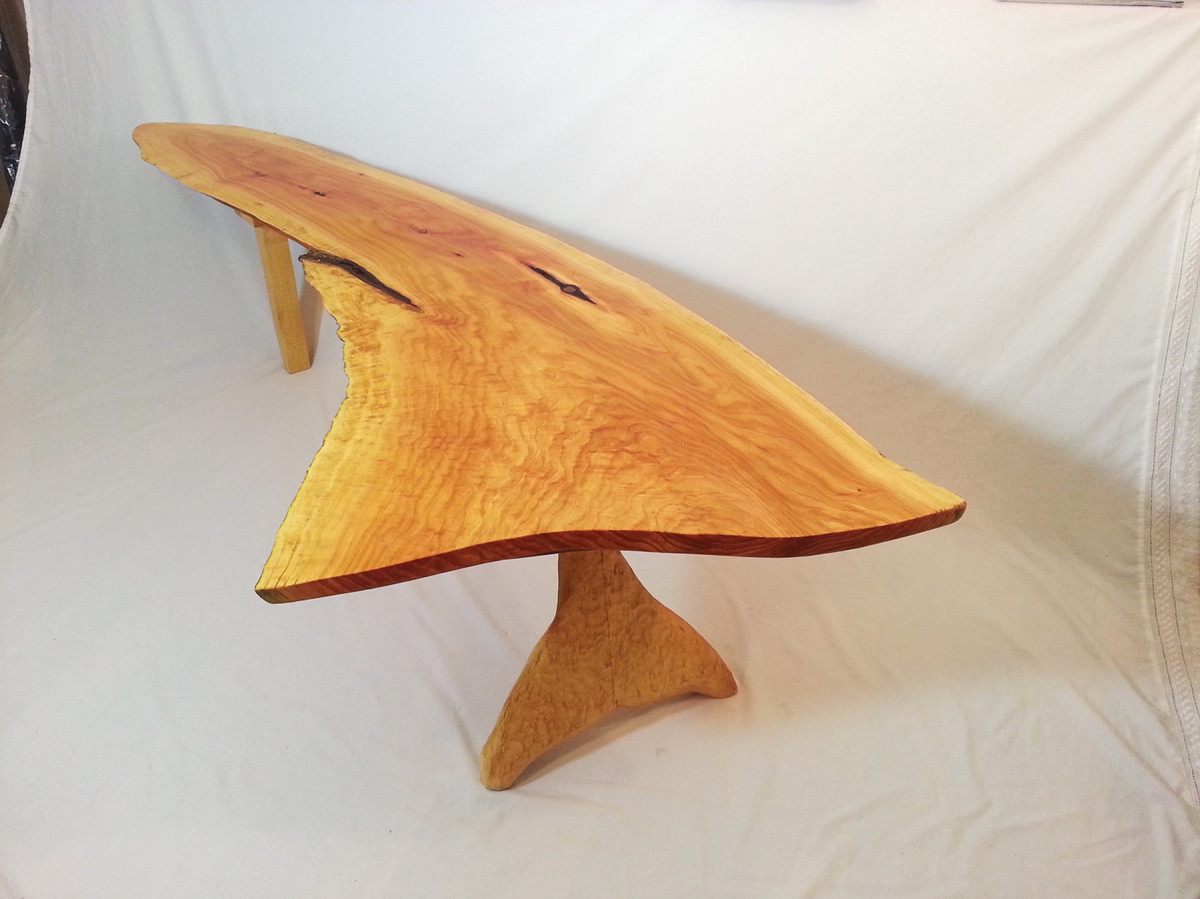We may receive a commission when you use our affiliate links. However, this does not impact our recommendations.

A rescue and careful work reveal the spirit of land and sea.
I have lusted for years after the wide, irregular planks used by the legendary George Nakashima to capture what he called “the soul of a tree.” I would give them new life as a piece of furniture emphasizing the natural figure and sculpted edges of the wood, just as he did for decades.
I thought I would never be lucky enough to acquire such a marvelous gift of nature.
It turned out I was wrong. We stopped at a tiny village during one of our yearly cruises through southeast Alaska, and as I walked across a bridge from the dock to the shore, I saw what I had yearned for all those years.
It was beautiful, even from a distance – a wide piece of wood, gracefully arched, and the lapping water of a receding tide was about to drag it out into the bay. It would probably end up on a distant shore, wasted by pounding surf and harsh weather.
Determined not to let that happen, I raced into the quaint village and found the local sawyer who had recently harvested a dying yellow cedar.
“What will it cost me to take that piece of wood off your hands?” I asked him, pointing toward the bay. “If you can carry it you can have it,” he answered.
Minutes later, it was on the aft deck of my boat – where, because of a back injury the following week, it would remain, unprotected, for three months. Friends finally retrieved my boat for me because I was in no shape to run it. When they returned to our home in Juneau, I was amazed to see the plank still on the boat, badly weathered, but seemingly undamaged.
It looked horribly neglected, reminding me of this paragraph in Nakashima’s autobiography:
“We are left in awe by the nobility of a tree, its eternal patience, its suffering caused by man and sometimes nature, its witness to thousands of years of earth’s history, its creations of fabulous beauty. It does nothing but good, with its prodigious ability to serve, it gives off its bounty of oxygen while absorbing gases harmful to other living things. The tree and its pith live on. Its fruits feed us. Its branches shade and protect us. And, finally, when time and weather bring it down, its body offers timber for our houses and boards for our furniture. The tree lives on.”
I knew Mr. Nakashima would disapprove if I failed to find this tree’s soul. So I began working the wood, first with handplanes and finally with my random-orbit sanders, revealing the troubled story of the tree’s entire life. The tree had been bent, probably by a heavy snow load, and the inside curve of the wood was rippled, framing complex figuring that resulted from the stress of that deformation.
But slowly, something else emerged. The tree had become a whale. Not an anatomically perfect whale, but clearly a whale, like the great animals that inhabit the very waters where I found the slab.
The soul of a tree had become the soul of a whale.
I’m haunted by another paragraph in Mr. Nakashima’s book.
“The tree’s fate rests with the woodworker. In hundreds of years its lively juices have nurtured its unique substance. A graining, a subtle coloring, an aura, a presence will exist this once, never to reappear. It is to catch this moment, to identify with this presence, to find this fleeting relationship, to capture its spirit, which challenges the woodworker.”
Now, my treasured plank is more than a whale. It’s a table, with folding legs so it can hang on a wall when it’s not in use. It’s the most beautiful piece I’ve made in 50 years of woodworking, and that’s not because of my skill. It’s because Mr. Nakashima was right. That tree had a soul.
Lee Dye has been writing about science longer than he cares to remember, but his real passion is woodworking. He prefers local woods found near his home in Juneau, Alaska.
Here are some supplies and tools we find essential in our everyday work around the shop. We may receive a commission from sales referred by our links; however, we have carefully selected these products for their usefulness and quality.








